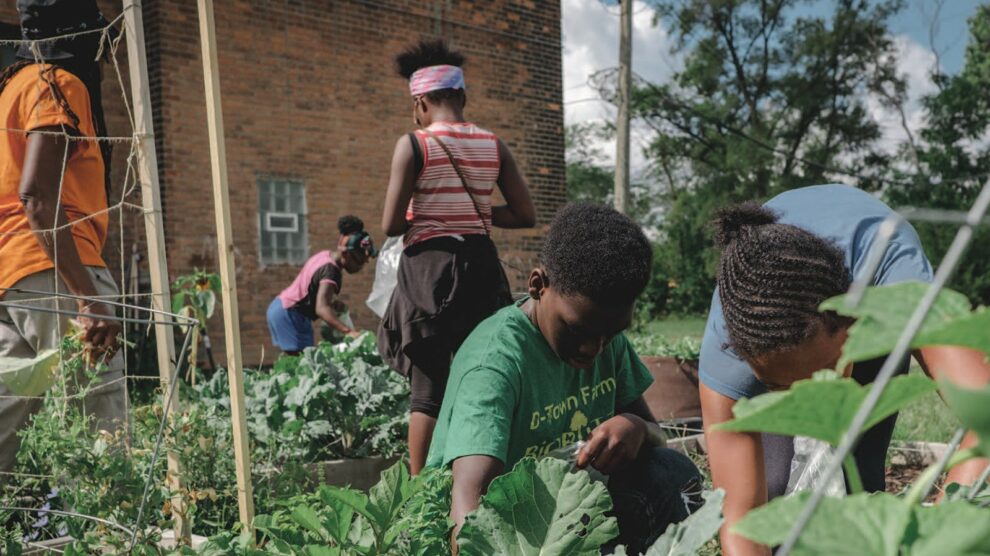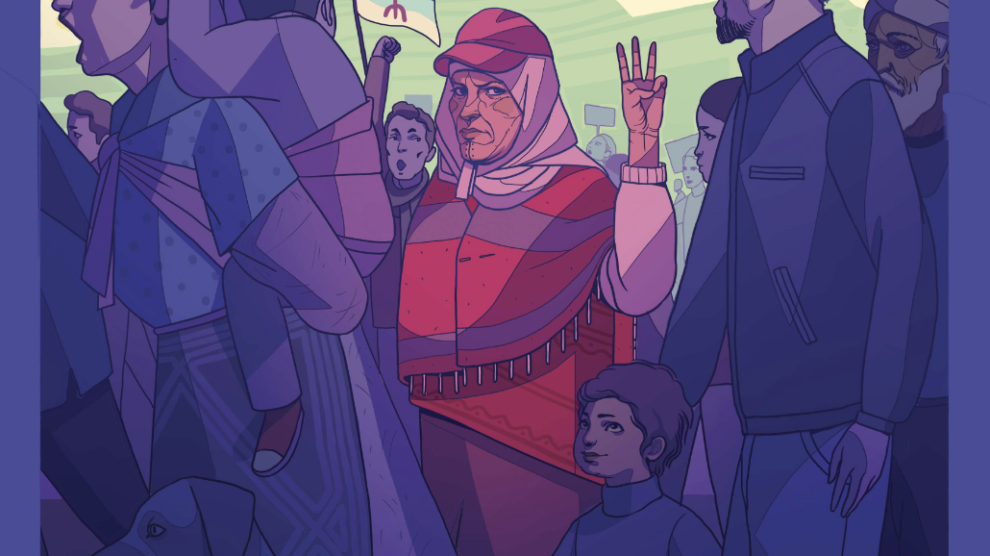Cooperatives Fail to Alleviate Community Poverty
By Josephine Chinele
Volume 24, no. 3, Cooperation: Theory and Practice for the Commons
This article is also available in Chichewa.

As of 2020, Malawi is one of the poorest nations in the world, ranked at 174 out of 189 countries and territories in the Human Development Index. Of the eighteen million Malawians, 50.7 percent are at subsistence level, regardless of their employment status, with another 20 percent living in extreme poverty.1 Agriculture makes up 80 percent of the Malawian economy, and the Human Development Index also indicates a higher rural poverty level compared to urban areas.2
Malawi’s high rural poverty levels and potentially profitable agricultural sector have made the country a prime target for nongovernmental organizations (NGOs), which have been quick to introduce various interventions and models in their claim to alleviate rural poverty. Among these potential solutions are farm cooperatives: a network of member farmers who work together to buy necessary supplies and services, as well as distribute, market, and sell their products.3 Forming cooperatives is supposed to increase the productivity of individual subsistence farmers and potentially attract large-scale buyers, obtain better prices for crops, and generate commercial revenue—some of which might be reinvested as capital used to further expand the scale or efficiency of their operations. The rhetoric of cooperatives seeded by NGOs suggests that this model can provide initial support for communities to build and run initiatives on their own, for their own benefit.
Malawi’s President, Dr. Lazarus Chakwera, has also emphasized the important role that cooperatives can play in developing the country’s agricultural sector. Malawi’s leaders have strongly encouraged farmers to form cooperatives in order to gain access to agricultural financing and reap the other benefits that have been touted by NGOs.4
However, the reality of cooperatives is far from the rosy picture painted by those who promote them. According to Malawi’s Ministry of Industry, out of the one thousand registered cooperatives in their books, only 30 percent have been successful.5 Even though cooperatives, if properly-run and well-mentored, could potentially provide real benefits to the Malawian subsistence farmers making the shift to commercial agriculture, NGOs have not alleviated poverty for the intended beneficiaries of the cooperative model.
One especially heart-wrenching example of failure is the one-hundred-member Nguludi Cooperative, located in Chiradzulu within Malawi’s Southern region. The cooperative was established under the Amai Angathe project implemented by the Centre for Alternatives of Victimized Women (CAVWOC) in partnership and with funding from Oxfam Malawi.6 Nguludi members were trained by CAVWOC to manufacture jam, tomato sauce, and pork sausage from agricultural materials available locally. Yet, according to Eunice Victory, spokesperson for the Nguludi Cooperative:
After the inception of our cooperative, we looked forward to making and sharing profits from our products. We had all the energy to make this work. Immediately after training, we met and made the products using firewood and home pots. But it wasn’t enough for sale.7
What went wrong? Victory explained that after the initial training, the group noticed there were no further activities scheduled. Following up with the CAVWOC’s Projects officer, the group was told that the project had been phased out and to expect no further assistance:
We were equipped with skills needed to start off. But afterwards, the NGO did not provide us with the start-up equipment and assist in having the building we are to use for production with electricity. They sort of dumped us . . . . It has been meaningless to continue meeting because we do not have the startup materials or the capacity to sustain this cooperative. The members are heart broken. This cooperative was their hope to rescue them from poverty.
Although many believed that the cooperatives have the potential to succeed, it is clear that the CAVWOC did not provide a full-cost accounting or follow-through, contributing to the project’s failure. The project involved the introduction of a village saving and loans grouping, as well as resources on sustainable agriculture methods, horticulture, and animal and food production. According to Thokozani Chiwandira, Program Manager for CAVWOC:
The cooperative was established towards the end of the project as a matter of value addition to their agricultural products such as tomato and pork. The only challenge we encountered was the fact that the production building didn’t have electricity for them to start immediately. Our project didn’t include electricity provision costs, [and] we couldn’t do it for them.8
The collapse of the CAVWOC project did not seem inevitable to everyone. The Group Village Head (GVH) Mpama was hopeful when the NGOs arrived in the Chiradzulu area, where three-quarters of the people live in poverty:
I feel bad that this didn’t materialize. People of this area are still in dire poverty. People of this area . . . are hard working as most of them do farming but [only] lack opportunities. [They produce] perishables like tomato but there are no markets for them. If [these products] are not wasted, vendors [can] come to buy from here, but at very low prices.9
The GVH acknowledges that the cooperatives could work well if there were adequate resources, continuing support, and training for the members about what is expected of them. However, after the CAVWOC fiasco, no other NGOs have entered the Chiradzulu area.
Was it naiveté on the NGO’s part to not consider the lack of electrical infrastructure in one of the poorest regions of a country plagued by poverty? Or was there something else?
In a blog post, Masautso Chimombo argues that even though academics, policy makers, and implementers have been convincing smallholder farmers that joining cooperatives would help them, years down the line farmers are withdrawing membership. Chimombo states:
The smallholder farmer is selling [their] agro-produce at prices that are significantly lower than the costs that were incurred in producing them . . . . Failure to secure profitable markets for the cooperative members, late sales payments to cooperative members, perceived high cooperative membership fees . . . are the reasons that are leading to [failure of cooperatives].10
Another reason for the failure of cooperatives is that only the Ministries of Trade and Industry are authorized to register new cooperatives and train new members. Bureaucratic inefficiency means that there is always a shortage of officers to train cooperative members.
In addition, Ministry officials are hesitant to provide training to cooperatives that are initiated by local, non-NGO-mediated efforts. Preference is given to NGOs because they offer competitive allowance packages to the trainers: a minimum individual per diem of forty dollars (USD) per day plus additional transportation reimbursements.
Even when training is provided, it is often inadequate as most orientations are held only for five to six days with limited to no chances of refresher courses. In this short period, cooperative members are expected to learn about product value addition and processing, leadership, financial management, marketing, bureau of standards, and government certifications processes (and most topics are not even addressed). Perhaps more importantly, low literacy levels compounded by poverty presents the biggest challenge.11 The Ministry of Industry’s spokesperson, Yamikani Kadzakumanja, notes the high number of failed cooperatives, stating that while “we have evidence of economic transformation on the ground, the majority of these initiatives aren’t working as anticipated.”12 Kadzakumanja faults the NGOs for contributing to this failure by introducing the cooperative aspect too late in the project’s life cycle, flatly stating that “most cooperatives initiated by development partners (NGOs) have ended up not being successful.”
Are there successful examples of cooperatives? An award-winning example is perhaps the Kamwendo Cooking Oil Cooperative, based in Malawi’s central region district of Mchinji. The Kamwendo cooperative faced the same challenge of lacking financial and organizational management. The Cultivating New Frontiers in Agriculture (CNFA) initiative13 provided training to help the Kamwendo cooperative settle on the market by teaching cooperative members basic bookkeeping, business management, marketing, strategic business planning, and food processing quality. Instead of rushing through training, these lessons were taught over a period of time and delivered by different CNFA volunteers.14
As Malawi aligns its economic development agenda with its 2063 Vision for “an inclusively wealthy and self-reliant nation,”15 the success of cooperatives would be highly celebrated. From the National Planning Commission of Malawi:
It is important that the government and all stakeholders in development should continue supporting the creation, growth, and sustainability of cooperatives in the country . . . . Lessons [should] be drawn from those that are successful to help those that are struggling to improve and start bearing fruits for their members.16
But it remains uncertain how exactly the lessons can be drawn when 70 percent of Malawian cooperatives fail. The evidence that Malawi still remains the poorest country in the world, with no immediate signs of recovery, speaks against NGOs’ lofty promises of alleviating poverty or jumpstarting economic development.
Notes
- United Nations Development Programme Report, “The Next Frontier: Human Development and the Anthropocene, Briefing Note for Countries on the 2020 Human Development Report: Malawi,” accessed December 3, 2021, http://hdr.undp.org/sites/all/themes/hdr_theme/country-notes/MWI.pdf.
- “Overview,” The World Bank in Malawi, accessed December 3, 2021, https://www.worldbank.org/en/country/malawi/overview.
- Esther Fleming, “What is Considered an Agricultural Cooperative?,” SidmartinBio, accessed December 3, 2021, https://www.sidmartinbio.org/what-is-considered-an-agricultural-cooperative/.
- Watipaso Mzungu, “Chakwera Urges Smallholder Farmers to Form Cooperatives As He Receives Maize Donation from Mdapepuka Cooperative,” Nyasa Times, October 8, 2021, https://www.nyasatimes.com/chakwera-urges-smallholder-farmers-to-form-cooperatives-as-he-receives-maize-donation-from-mdapepuka-cooperative.
- Yamikani Kadzakumanja, phone interview with the author, September 22, 2021.
- Translated as “women are able.”
- Eunice Victory, phone interview with the author, September 22, 2021.
- Chiwandila Thokozani, interview with the author, September 27, 2021.
- Mpama Group Village Head, phone interview with the author, September 22, 2021.
- Masautso Chimombo, “Failed Promises: The Decline of Cooperation Membership in Malawi,” FAC Blog, September 27, 2018, https://www.future-agricultures.org/blog/failed-promises-the-decline-of-cooperative-membership-in-malawi/.
- According to the 2018 Malawi Population and Housing Census report, Malawi’s literacy rate is at 68.6 percent. See National Statistical Office, “2018 Malawi Population and Housing Census,” accessed December 3, 2021, https://malawi.unfpa.org/sites/default/files/resource-pdf/2018%20Malawi%20Population%20and%20Housing%20Census%20Main%20Report%20%281%29.pdf.
- Yamikani Kadzakumanja, phone interview with the author, September 22, 2021.
- CNFA is an international agricultural organization that specializes in the design and implementation of sustainable enterprise based agricultural initiatives.
- “Voluntary Technical Assistance Leads a Co-op to Success,” Success Stories, Cultivating New Frontiers in Agriculture, accessed December 3, 2021, https://www.cnfa.org/success-story/voluntary-technical-assistance-leads-a-coop-to-success-in-malawi/.
- National Planning Commission, “Malawi 2063: An Inclusively Wealthy and Self-reliant Nation,” accessed December 3, 2021, https://npc.mw/wp-content/uploads/2021/02/MW2063-VISION-FINAL.pdf.
- Khanje Thom, email questionnaire response to the author, September 22, 2021.





